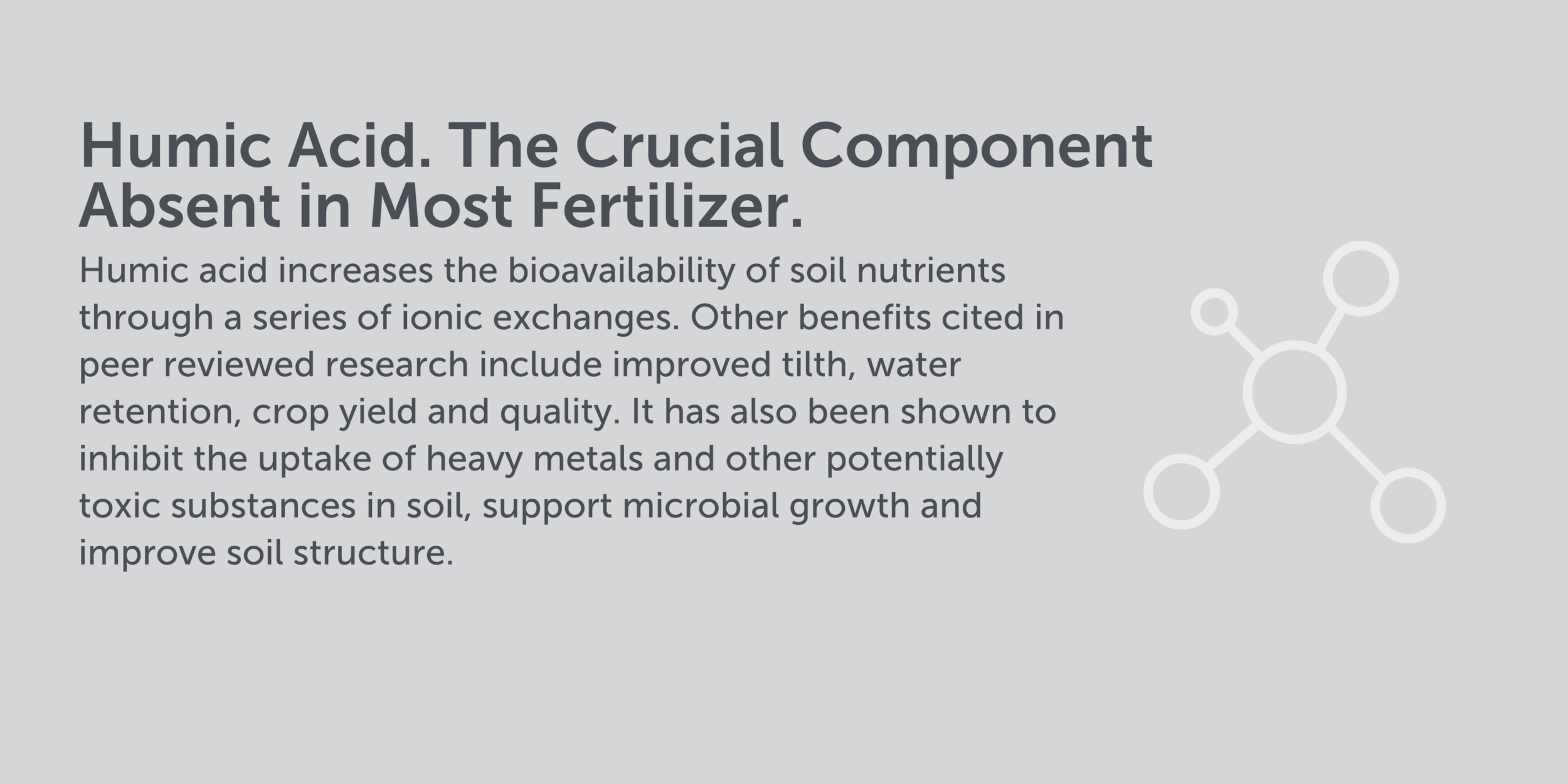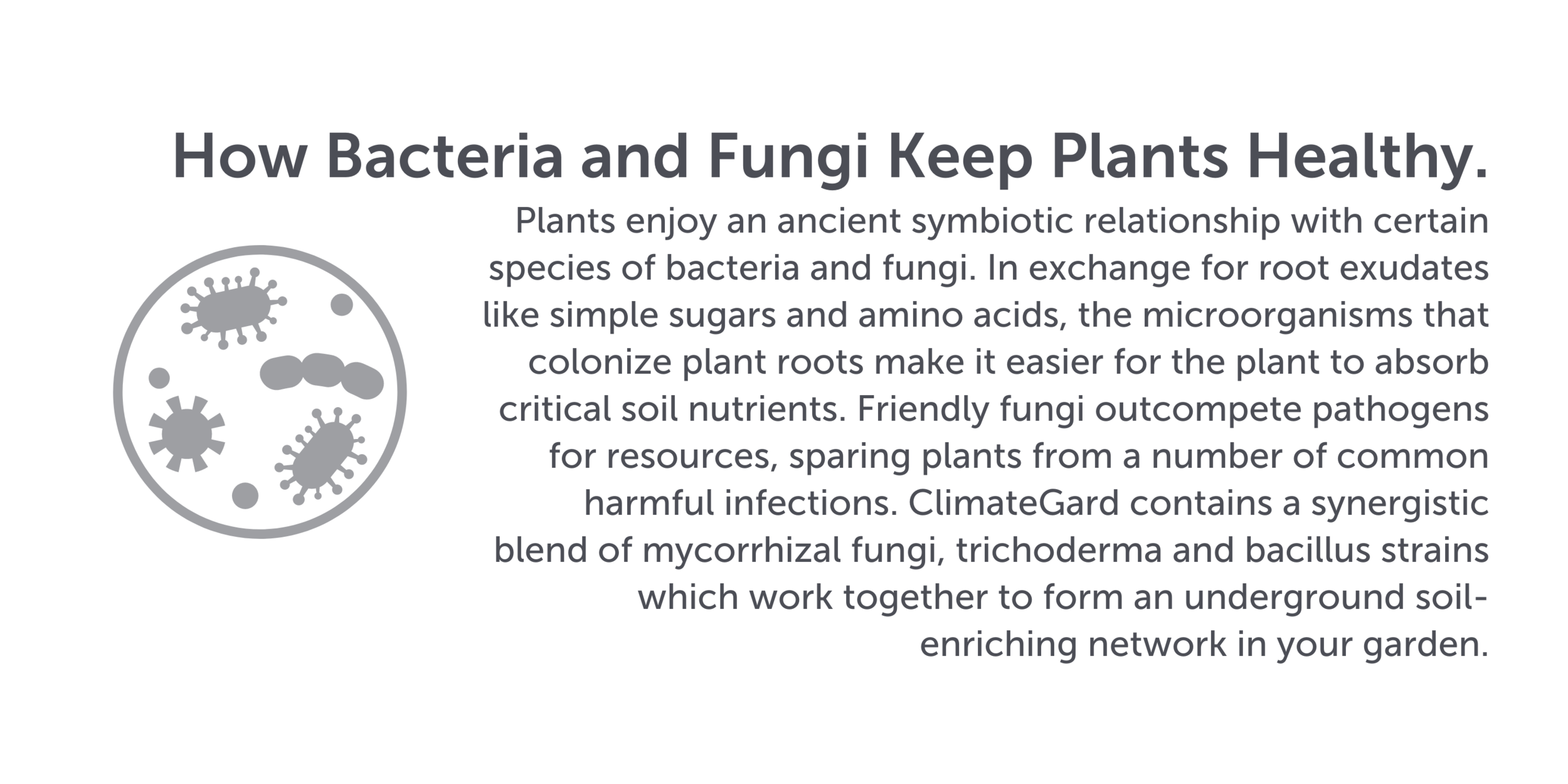Get Started Creating a Living Soil Ecosystem
ClimateGard™ uses cutting-edge microbiology and ethically-derived plant nutrition to produce the same results as conventional fertilizers without the negative environmental impacts. Our biodynamic, no-kill formula creates a living soil ecosystem that will continue to flourish long after its last application.
7.5 Pound Bag $39.95
15 Pound Bag $69.95
Connect with Us
Our free newsletter has everything you need to turn your small farm or garden into a Climate Farm. Sign up today to get exclusive organic gardening content, special offers & be the first to know about groundbreaking product launches.
Learn More About the Science of Healthy Soil
Supercharging plant health with silica
The importance of silica in determining soil structure and form has long been recognized by hobbyist gardeners, professional farmers and agricultural scientists alike. One of the most abundant elements on earth, silica plays a crucial role in determining where a given sample sits on the well-known sand-silt-clay quality triangle, and has long been recognized as a key component of pest and disease resistance in grass crops like rice and sugarcane. But the significance of silica in farming and gardening is actually much greater than that. Recent advances in agricultural >
How bacteria and fungi keep plants healthy
The role of microorganisms in plant nutrition has been widely studied and well-documented in scientific literature. Unfortunately, the internet is replete with bad information on this topic, ranging from misuse of the term itself to a misunderstanding of how these biologicals impact plant health. Broadly speaking, bacteria and fungi are crucial to everything from the breakdown of organic matter in soil to efficient water use, as well as pest and disease control. Perhaps most importantly, they help regulate nutrient efficiency in the place where plant roots meet the soil (the rhizosphere). >
How minerals and secondary micronutrients support plant health
If you know anything about the active ingredients in most fertilizers, you know nitrogen, phosphorus and potassium are critical to stimulating plant growth. Collectively referred to as NPK, this trio are universally regarded as the indisputable bedrock of any fertility program. What you may not know is that there are a host of other minerals and elements that play equally crucial roles in sustaining healthy fruit and vegetable crops. In order to understand what those are and how they work, it’s important to first understand the mechanisms by which NPK leads to >
Humic Acid: The crucial component absent in most fertilizer
The agricultural benefits of amending soil with humic substances are well-documented and undisputed. Discovered almost 200 years ago and used in farms and gardens across the globe, these organic soil components help regulate nutrient and water uptake, leading to improved nutrient efficiency, improved drought resistance and pest and disease reduction. They’re also a source of food for the countless beneficial bacteria and fungi that play critical roles in plant and soil health. Before we explore the mechanism by which these substances achieve the feats described above, let’s begin by defining them. The term ‘humic substances’ >










